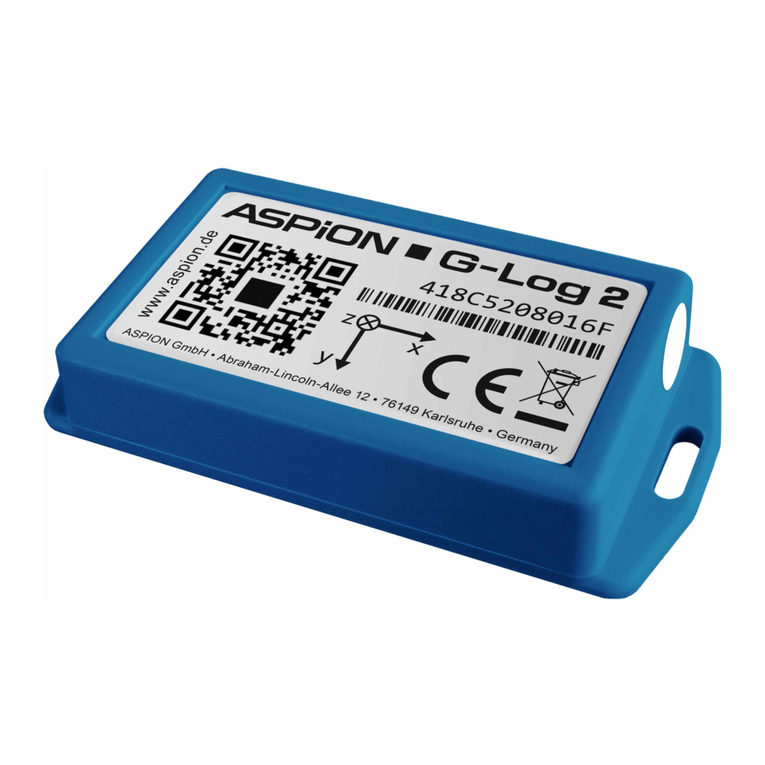ASPION G-Log and ASPION G-Log Waterproof –Quick guide
Copyright © 2021 ASPION GmbH Page 2
Easily get started: Quick test
▪Install the card reader and the PC software ASPION G-Log Manager [1].
▪Place a data logger with the bottom side (label visible) on the card reader.
Attention: Do not place the card reader on a metallic surface (e.g. PC).
▪Activate a data logger with "Write sensor" and the "Standard low" profile [4].
▪Create a shock: Drop the data logger from a height of approx. 25 cm.
The data logger records a shock event as soon as a 4 g acceleration is exceeded on one
axis for 10 milliseconds.
▪Read out the data logger via a PC software (label visible) and/or app [5].
▪Have a look at the data analysis, especially the shock details (PC software) with the shock
course displayed in milliseconds on all 3 axes [6].
▪Stop the data logger with the PC software to reduce battery consumption. Recorded
events are deleted when recording data again.
Important: What do I need to consider before using the data logger?
▪Where do I mount the data logger?
It is best to mount the data logger directly on the transported goods, at a sensitive point,
preferably in the upper third section: with screws, industrial adhesive tape or cable tie.
▪How sensitive is my transported good to shocks, which settings do I choose?
In general: The heavier the goods to be transported, the lower the threshold value, e.g.
300 kg .. < 1 t →Standard high profile - 8 g at 20 milliseconds shock duration
> 1 t .. 8 t →Standard medium profile - 6 g at 15 milliseconds shock duration
> 8 t .. 15 t →Standard low profile - 4 g at 10 milliseconds shock duration
Select a higher or lower profile for lighter/heavier goods.
▪How important are temperature values?
Data recording is event-based with an indication of threshold values: If the values fall
above or below the set threshold value for at least 15 minutes, the data logger records a
temperature event including peak temperature and average value every 10 hours at the
latest.
Please note: with the total memory capacity, you can store 286 events in total for shock,
temperature and activity; if the circular buffer is full, events of a previous date will be
overwritten (except for the first and further 8 peak shock details).
▪How can I retrieve the recorded data?
You can easily read out the data logger via the Smartphone App and directly send the
data from the app via e-mail and import it into PC software. Use the included template to
explain the use to your colleagues and business partners. Alternatives: Time-controlled
stop or stop with the Smartphone App and PIN (only for Android).


























